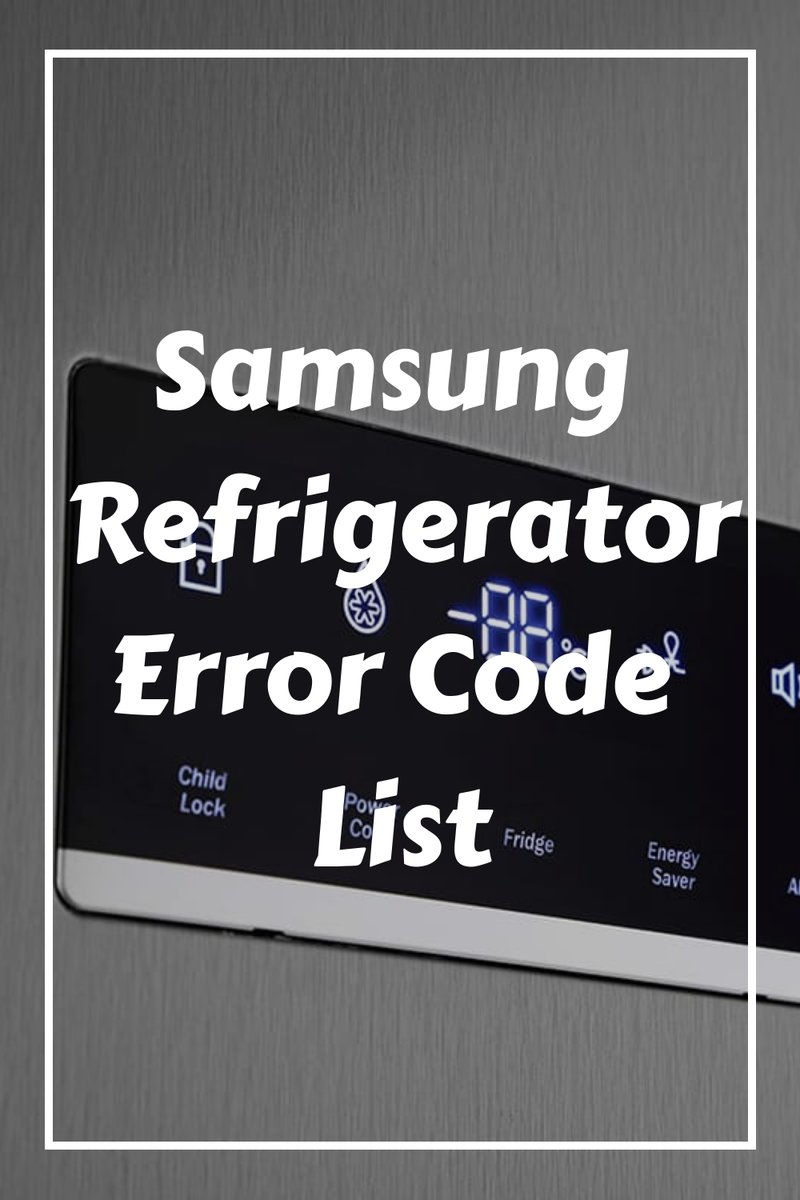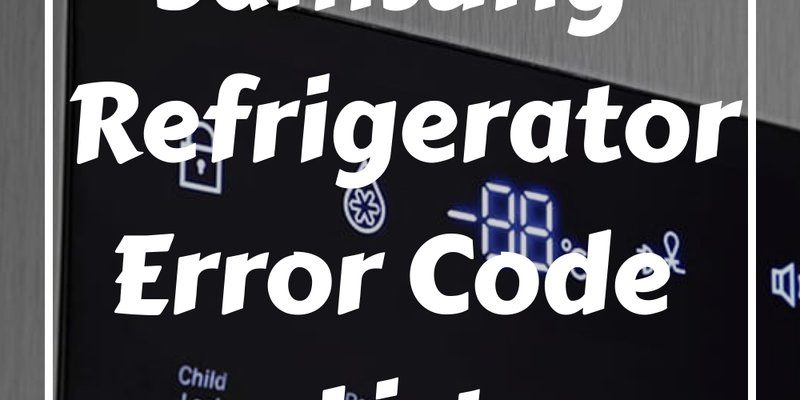
The OE error code often indicates an overflow issue in your Samsung fridge. This means that somewhere inside your high-tech pal, water is accumulating more than it should. Think of it as a mini-flood trapped inside your appliance. It could be due to a clogged or malfunctioning water inlet valve or perhaps a blocked drain. But the big question hanging over your head might be: “Is this covered under warranty?” Well, let’s dive in and break it down step by step.
Understanding the Samsung Refrigerator Warranty
When you first purchased your top-of-the-line Samsung refrigerator, it came with a manufacturer’s warranty. This warranty acts like a safety net, promising repairs and replacements for certain issues that might crop up. Warranties usually cover parts and labor for specific problems within a designated time frame. Typically, a Samsung refrigerator warranty might cover one year for parts and labor, with some models offering extended coverage for certain components, like the compressor.
However, understanding the exact terms of your warranty can feel like decoding a foreign language. The key is to read the fine print carefully. Warranties usually cover defects in material or workmanship, so if your OE code is due to a manufacturing fault or defective part, you might be in luck! Imagine your refrigerator as a car; if the engine stalls because of a faulty part, the dealer would likely fix it under warranty. Similarly, if your fridge’s code results from a defect, Samsung’s warranty could have you covered.
But here’s the catch: warranties generally don’t cover damage caused by misuse or outside factors like power surges. So, if your fridge endured a wild party and someone accidentally spilled a drink that seeped into sensitive areas, that might not be covered. To get clarity, it’s wise to contact Samsung customer support or check your warranty manual for specific details. They can help you understand exactly what’s covered and what steps to take next.
Troubleshooting and Fixing the Error Code OE
Seeing an error code on your fridge might feel like spotting a warning light on your car’s dashboard—it’s unsettling and demands action. Before panic sets in, there are a few DIY steps you can try at home. The first thing you want to do is check the drainage. Sometimes, the drain can become blocked with food debris or ice. Think of it like a kitchen sink with food scraps stuck in—you’ll need to clear the blockage to restore proper function.
To tackle this, you might need to carefully empty your fridge, remove any panels that guard the drain (consulting your user manual for guidance), and clear any obstructions. If your fridge has an ice maker or water dispenser, check those for blockages too. This might sound daunting, but a bit of patience and reading through the manual can go a long way.
If the DIY route doesn’t solve the problem, it might be time to call in the professionals, especially if you suspect a faulty part like the water inlet valve. Think of it as calling a plumber when a faucet won’t stop leaking. A qualified technician can diagnose the issue and confirm whether the repair falls under warranty. Remember, attempting repairs yourself on complex issues might void your warranty, so proceed with caution.
Preventative Measures and Tips
Prevention, as they say, is better than cure. While it’s not always possible to avoid every appliance hiccup, regular maintenance can minimize the risk of running into issues like the OE error code. One simple tip is to regularly check and clean the drainage area to prevent clogs from forming. It’s like regularly cleaning your car to prevent rust and wear—consistent care can enhance performance and longevity.
Additionally, ensuring that your refrigerator is level can prevent water from pooling in areas it shouldn’t. It’s similar to ensuring your house’s foundation is even to prevent water damage. Check your appliance’s position with a level, and adjust the feet if necessary.
Lastly, familiarize yourself with your fridge’s user manual. It’s not just a boring read; it can be a friendly guide, offering valuable insights into operating your appliance correctly and maintaining it efficiently. By keeping up with these simple practices, you might avoid seeing that dreaded OE code altogether.
Ultimately, while the OE error can feel overwhelming at first, understanding your warranty and taking straightforward preventative steps can help manage the situation effectively. Always remember that when in doubt, reaching out to customer support or professional technicians can save time and prevent further issues.
